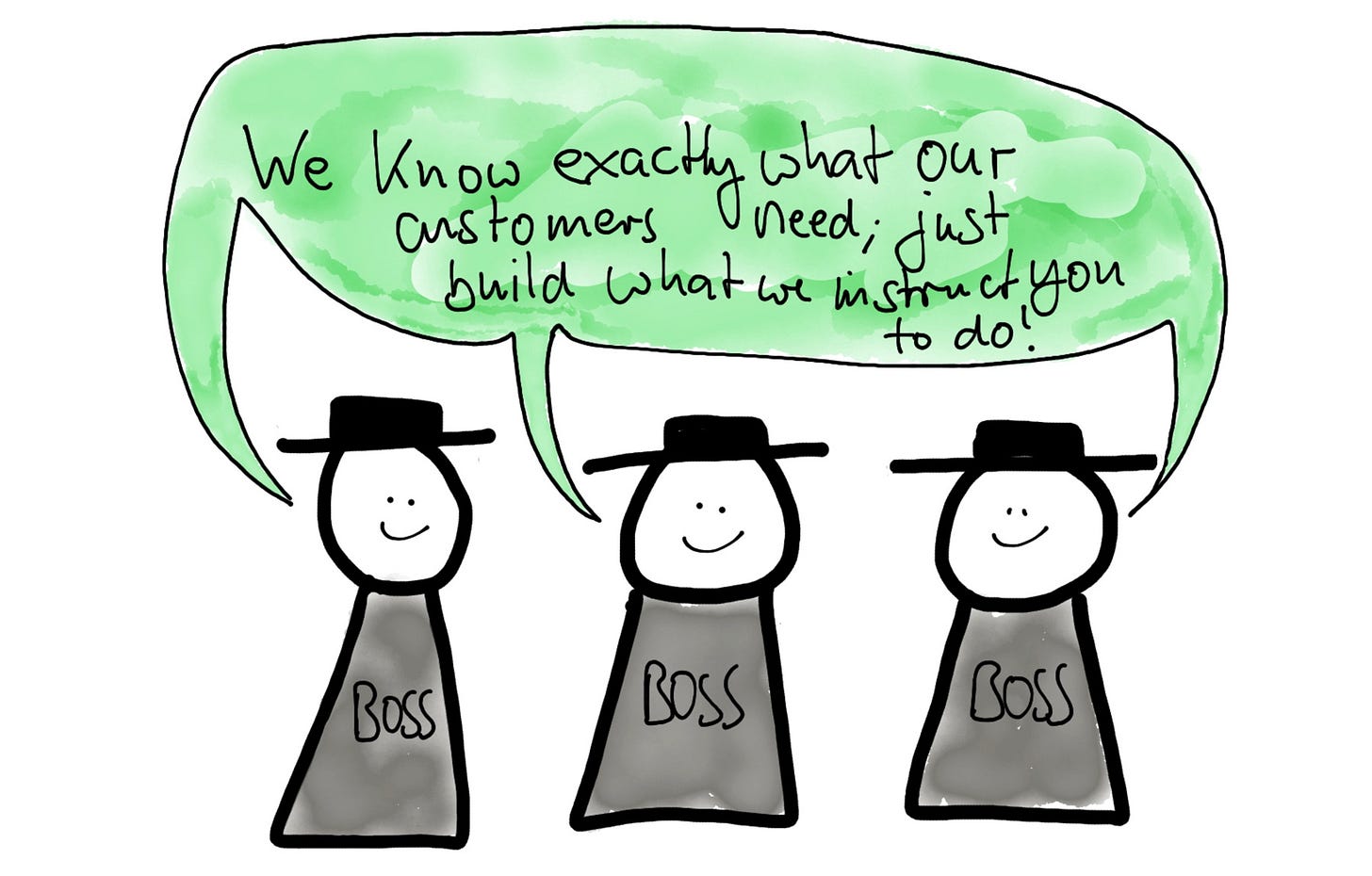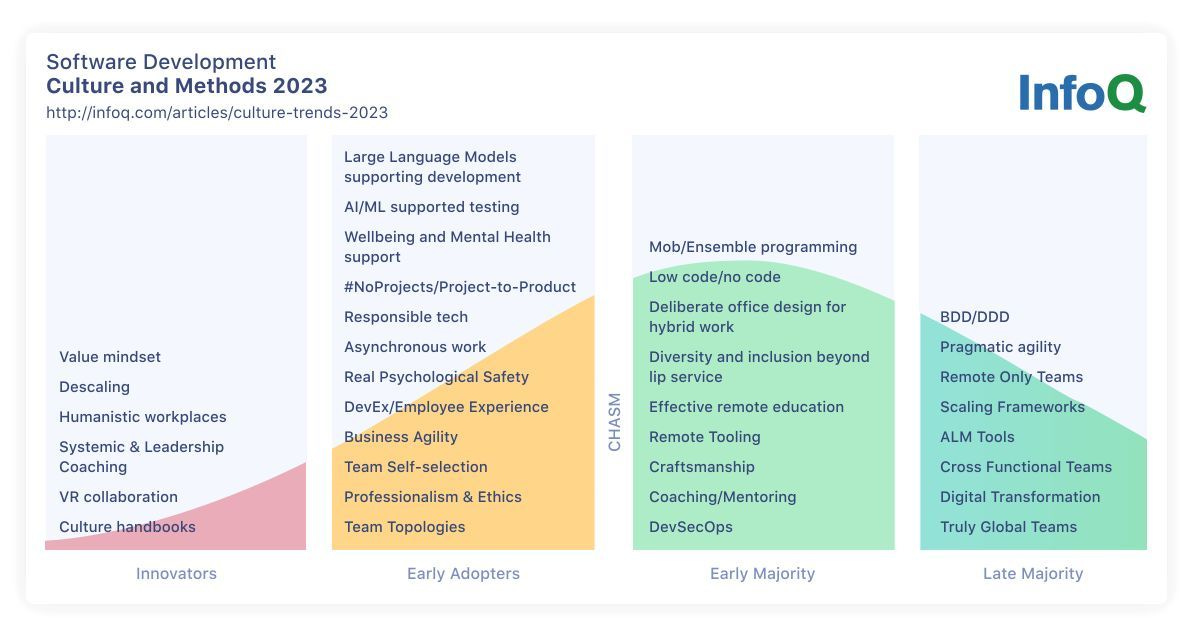Stakeholder Anti-Patterns — An Introduction
An Excerpt from the Scrum Anti-Patterns Guide (4)
Hello everyone!
Welcome to the fourth excursion into Scrum anti-patterns.
Today, we will learn how individual incentives and outdated organizational structures — fostering, among others, personal agendas and local optimization efforts — manifest themselves in stakeholder anti-patterns that easily impede any transformation to an agile organization.
The Stakeholder and Organizational Excellence in Legacy Organizations
Regularly, InfoQ applies the ‘Crossing the Chasm’1 metaphor to engineering practices, thus covering a part of the agile movement to create learning organizations. The ‘Culture & Methods Trends Report March 2023’2 edition found that recent converts to Scrum, for example, will recruit themselves mainly from the late majority and laggards. (The early majority of organizations already embrace, for example, business agility, team self-selection, and mob/ensemble programming.)
Those laggards—or legacy organizations—are easy to spot: Some form of applied Taylorism, from strict hierarchy to command & control to functional silos with limited autonomy, made it into the postindustrial era. Often, these organizations were once created to train farmers’ children into assembly-line workers within a standardized industrial process churning out standardized products in the name of output optimization. Humans became cogs in the machinery, rewarded for functioning well without asking questions.
Too bad, when nowadays, diversity, autonomy, mastery, and purpose become the driving factors in a highly competitive environment where more of the same for everyone is no longer creating value.
The conflict at the stakeholder level in such legacy organizations is apparent: mostly, the stakeholder is a manager of a functional silo with objectives that do not necessarily align with those of a product or Scrum Team. Where the organization needs to morph into a kind of 'team of teams' structure with a shared understanding of purpose and direction as well as the need to create value for the customers at heart, the reality of a legacy organization attempting to become agile is often very different. For managers, it means moving:
From WIIFM (what-is-in-for-me syndrome) to team-playing - the team wins, the team loses,
From career planning as an individual to servant leadership in a team of teams structure,
From knowing it all and being the go-to person to solve problems to trusting those closest to the problem to come up with a solution,
From 'failure is no option' to accepting failure as an unavoidable means to learn effectively,
From claiming success as a personal contribution to stepping back and letting the responsible team shine.
Abandoning yesterday's game-and probably its symbols of power, too-and accepting that an agile transformation may provide job security, but most certainly not role security is a monumental undertaking for the majority of the management of a legacy organization. Many of these managers will probably not adapt and even quit the organization sooner or later.3
Common Scrum Stakeholder Anti-Patterns
After defining the context, let us consider some Scrum stakeholder anti-patterns in detail. There are several high-level reasons for their existance:
Fear of Change: Stakeholders in the organization may fear losing power, control, or comfort with the familiar. The Agile Manifesto values “individuals and interactions over processes and tools,” but this shift could mean abandoning existing hierarchies, which may make stakeholders anxious.
Siloed Structures: Functional silos are critical elements of the legacy organizational design, reflected in many stakeholders’ status and remuneration. Preserving them for political reasons hinders cross-functional collaboration, an essential aspect of agile.
Misaligned Incentives: The organization may have still tied some management incentives to traditional performance measures incompatible with Scrum or agile principles. (Quote: Charlie Munger: “Never, ever, think about something else when you should be thinking about the power of incentives.” [4])
Short-term Focus: Legacy organizations often focus on immediate results, which clashes with Scrum’s focus on long-term sustainability.
Resistance to Learning: Becoming agile requires unlearning old practices and learning new ones. This learning curve can be intimidating. Additionally, there may be an insufficient training and coaching offering to stakeholders.
As a result, the organization may limit ‘becoming agile’ to product and engineering teams while the rest continue practicing the industrial age principles.
Conclusion
There are many different reasons why Scrum stakeholders do not act in line with agile principles. Some result from organizational debt, particularly in legacy organizations from the industrial area. Some are intrinsically motivated, for example, by personal agendas, while others originate from a lack of training or anxieties. Whatever the reason, Scrum stakeholder anti-patterns need to be overcome to turn an agile transformation into a success. Otherwise, you might end up in some form of cargo-cult agile or Scrumbut.
If you have any questions, please let me know.
Best,
Stefan
Wikipedia.org: Crossing the Chasm.
InfoQ: Shane Hastie: InfoQ Culture & Methods Trends Report - March 2023.
Medium: Greg Ferenstein, 2016-01-16: Exclusive: Zappos CEO Responds To Reports Of Employee Departures After Radical Management Experiment.





